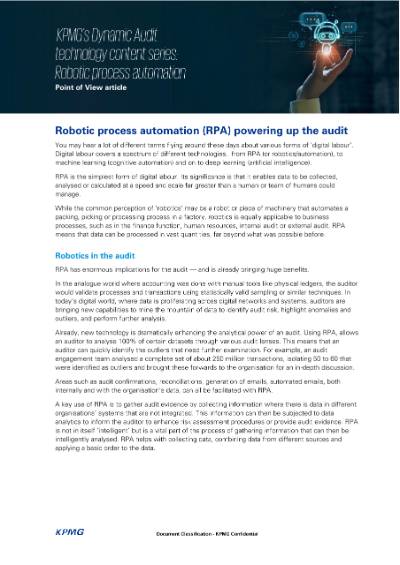Robotic process automation (RPA) powering up the audit
You may hear a lot of different terms flying around these days about various forms of ‘digital labour’. Digital labour covers a spectrum of different technologies, from RPA (or robotics/automation), to machine learning (cognitive automation) and on to deep learning (artificial intelligence).
RPA is the simplest form of digital labour. Its significance is that it enables data to be collected, analysed or calculated at a speed and scale far greater than a human or team of humans could manage.
While the common perception of ‘robotics’ may be a robot or piece of machinery that automates a packing, picking or processing process in a factory, robotics is equally applicable to business processes, such as in the finance function, human resources, internal audit or external audit. RPA means that data can be processed in vast quantities, far beyond what was possible before.
Robotics in the audit
RPA has enormous implications for the audit — and is already bringing huge benefits.
In the analogue world where accounting was done with manual tools like physical ledgers, the auditor would validate processes and transactions using statistically valid sampling or similar techniques. In today’s digital world, where data is proliferating across digital networks and systems, auditors are bringing new capabilities to mine the mountain of data to identify audit risk, highlight anomalies and outliers, and perform further analysis.

